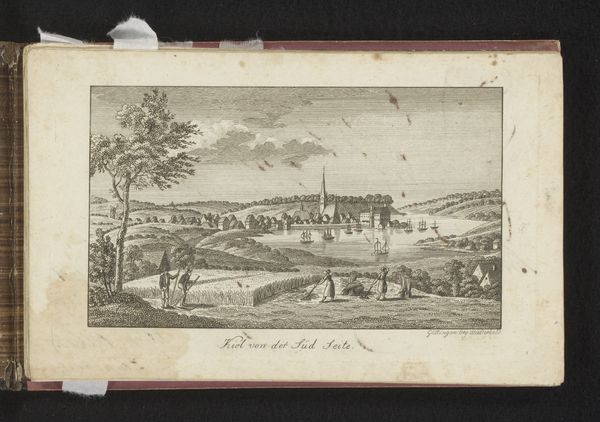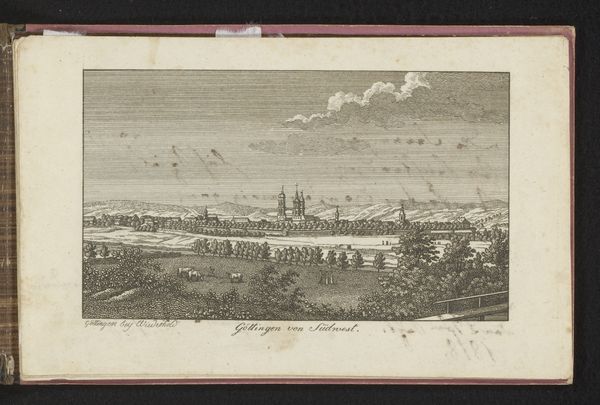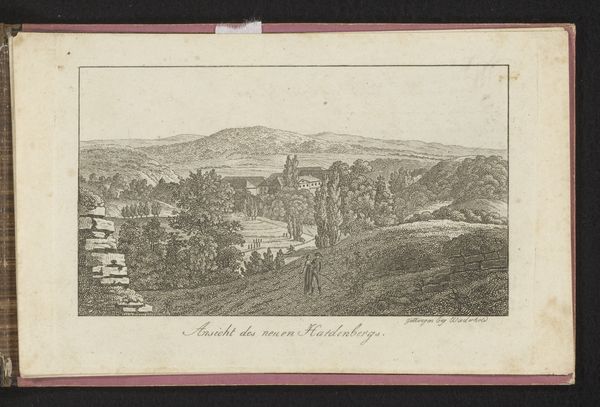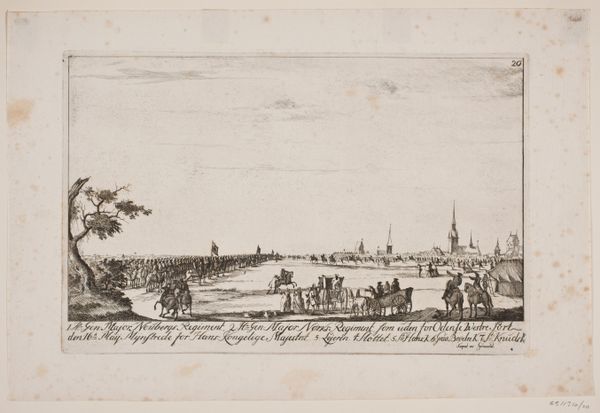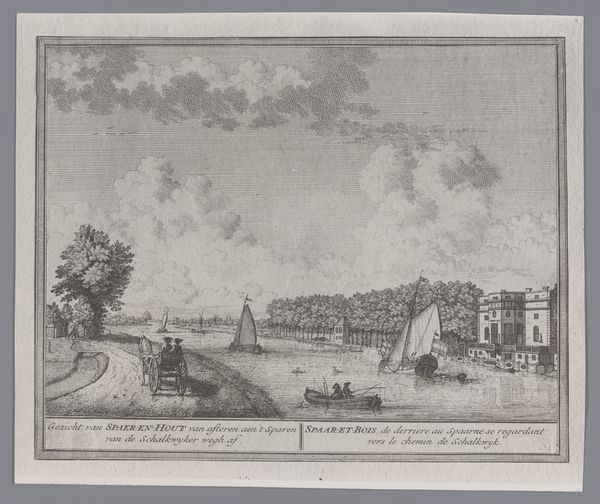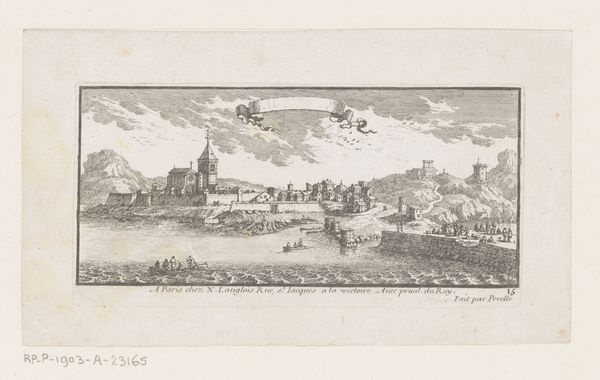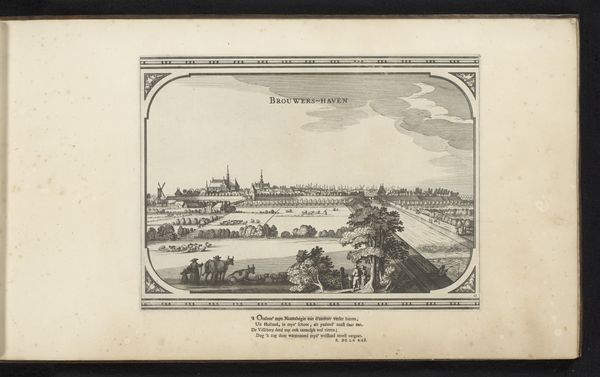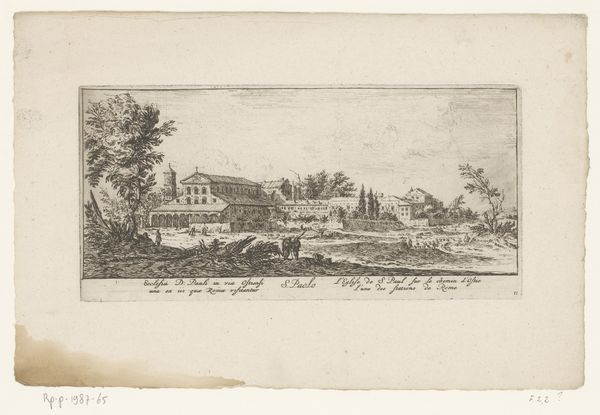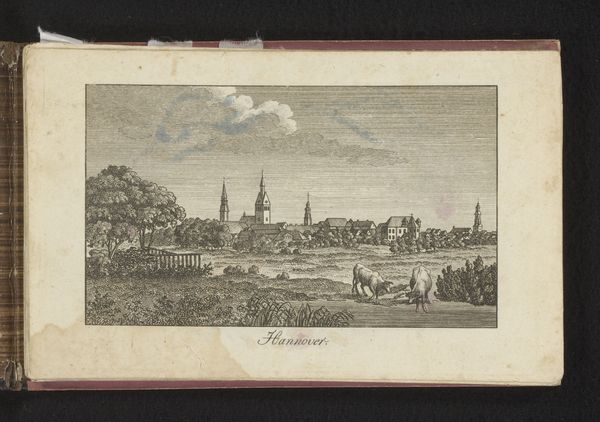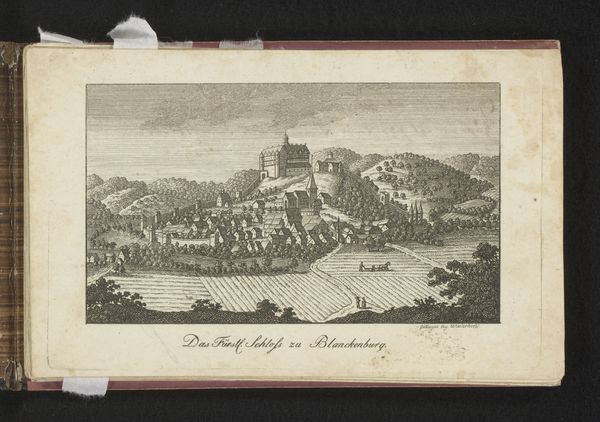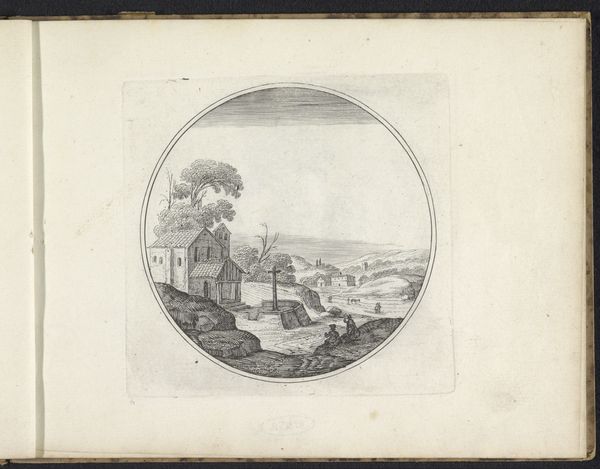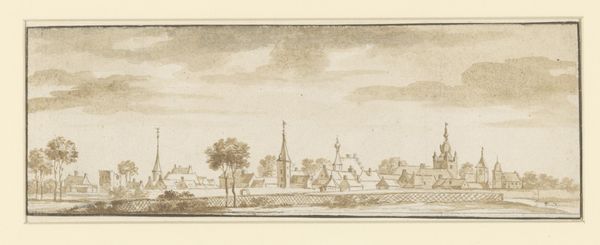
#
aged paper
#
toned paper
#
sketch book
#
hardpaper
#
personal sketchbook
#
coloured pencil
#
pen and pencil
#
sketchbook drawing
#
sketchbook art
#
watercolor
Dimensions: height 105 mm, width 171 mm
Copyright: Rijks Museum: Open Domain
Curator: Here we have a view of the Marble Palace at the Holy Lake near Potsdam. This artwork's date of creation remains somewhat open, with estimations ranging between 1770 and 1816, done with pen and pencil with a bit of watercolor. It comes to us from an anonymous hand. Editor: My first impression is one of serene isolation. The architecture feels meticulously rendered, but the surrounding landscape appears more like a dreamlike vision than a true depiction. Curator: Note the composition. The anonymous artist employs a relatively limited palette, a strategy emphasizing tonal variations across the picture plane, as evident from the aging of the paper. The eye is led toward the structure in the center, a rather fascinating display of symmetry and proportion in the building. Editor: I'm drawn to the symbol of the lake itself. Lakes, symbolically, are connected to ideas about the subconscious. And locating the Palace in the middle of one adds a fascinating psychological dimension. What secrets are hidden within? Is it possible that the artist uses landscape elements to enhance our sense of the personal mystery that any dwelling may conceal? Curator: The sketch's technique enhances its visual impact, with lines creating textures to evoke a mood rather than realistic form. The very precision invites speculation about this anonymous artist's method. Editor: Absolutely. Consider the choice of location for the Palace and this, again, gives clues as to the palace's symbolic power. In many cultural mythologies, water possesses cleansing and transformative qualities, also suggesting the building could have held transformative importance for whoever dwelt there. It’s interesting to contemplate who it served, or was supposed to serve. Curator: Indeed. In terms of overall structural analysis, the composition achieves a certain timelessness that transcends any strict temporal marker, as well. The use of color and line, the balancing of forms – all speaks to artistic skill. Editor: It really makes you wonder about the personal context of the piece within a sketchbook, possibly someone's memories or the world. Curator: It serves as an elegant exercise in the power of artistic expression itself, a beautiful record, really. Editor: And for me, it unlocks endless interpretive possibilities about the self, landscape and time.
Comments
No comments
Be the first to comment and join the conversation on the ultimate creative platform.
